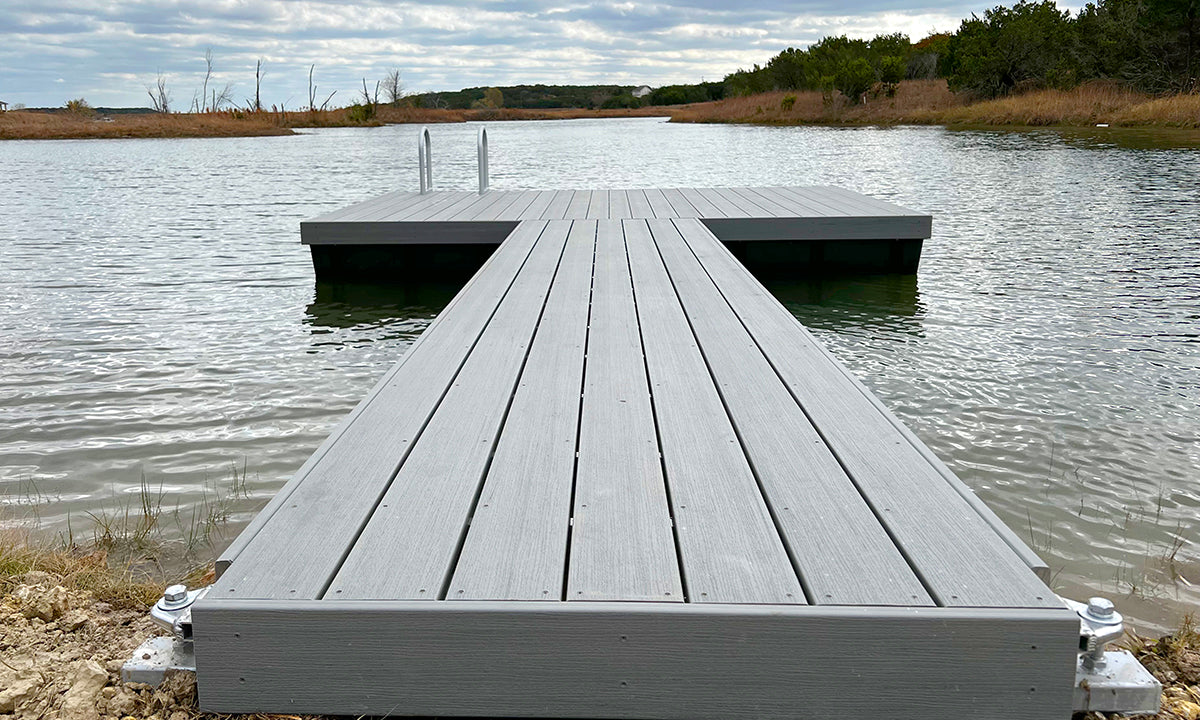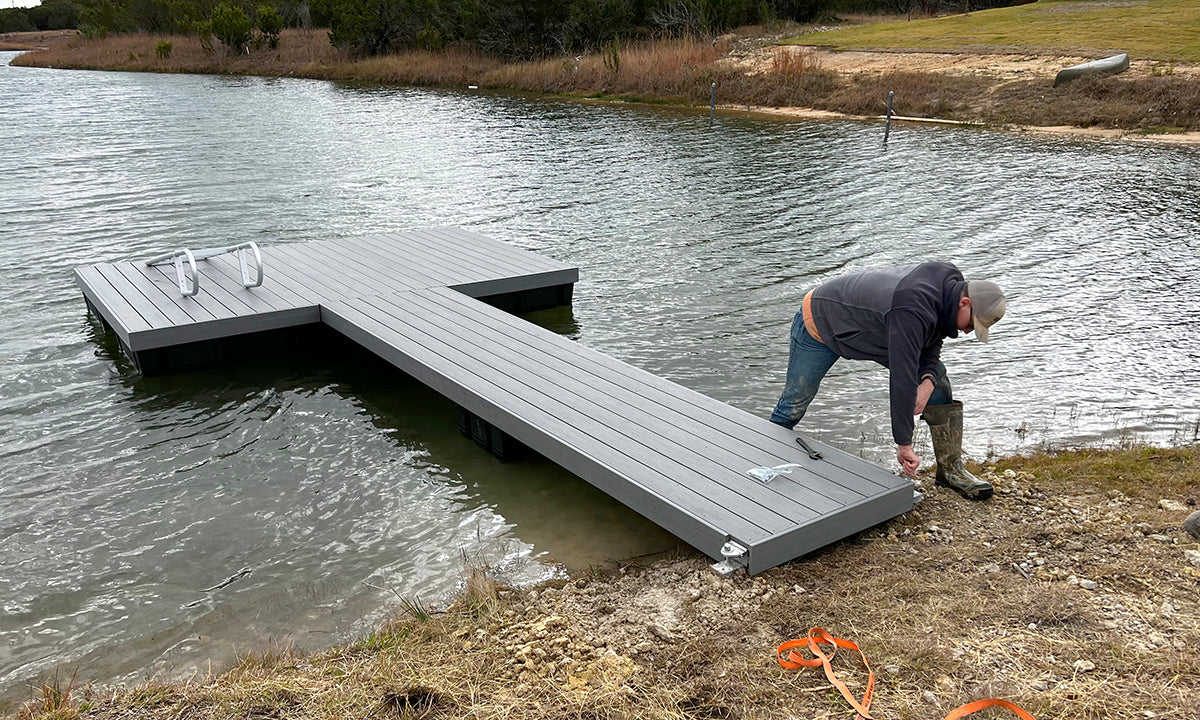Navigating the Options: Choosing the Right Dock Company for Your Floating Dock Task
Navigating the Options: Choosing the Right Dock Company for Your Floating Dock Task
Blog Article
Create the Perfect Docking Service With Floating Docks
Floating docks existing a flexible option for a selection of maritime demands, adapting seamlessly to changing water levels and diverse vessel types. Their modular nature permits fast installment and moving, yet the option of proper materials and layout functions is critical for guaranteeing both functionality and visual charm. As we discover the important elements that add to the performance of floating docks, numerous key variables concerning security and upkeep will certainly arise, raising inquiries regarding exactly how to enhance your docking experience. The subsequent conversation will certainly illuminate these important considerations.

Benefits of Floating Docks
Floating docks deal numerous benefits that make them an ideal option for different maritime applications. Unlike dealt with docks, floating docks rise and fall with the trend, making certain regular accessibility for vessels.
Additionally, floating docks are normally easier and quicker to install compared to traditional set frameworks. Their modular layout allows for straightforward assembly and disassembly, helping with maintenance and relocation when necessary. This adaptability is especially valuable for short-term applications or in environments where conditions might transform.
Floating docks additionally have a tendency to be a lot more eco-friendly, as they decrease disturbance to the seabed and surrounding water environments. Their buoyant nature decreases the risk of damage to marine life, promoting a much healthier atmosphere. These docks can be personalized to accommodate various vessel sizes, ensuring that they meet details functional requirements.
Inevitably, the combination of versatility, simplicity of installation, and environmental considerations makes floating docks an extremely effective option for a variety of maritime requirements.
Picking the Right Materials
Picking the appropriate materials for floating docks is vital to make certain durability, security, and durability. The option of materials straight affects the dock's efficiency in different ecological problems, including direct exposure to water, sunlight, and prospective wear from aquatic traffic.
Common materials used for floating docks consist of aluminum, wood, and high-density polyethylene (HDPE) Light weight aluminum is light-weight, corrosion-resistant, and calls for marginal upkeep, making it an excellent option for longevity. Nevertheless, its initial price can be greater contrasted to other products.
Timber, while visually enticing and providing a standard appearance, can be prone to rot and bug damage otherwise correctly treated. As a result, utilizing pressure-treated wood or naturally sturdy species like cedar or redwood can mitigate these issues.
HDPE is a prominent selection due to its resistance to UV rays and chemicals, together with being eco-friendly. floating docks. It is readily available and lightweight in various colors, enabling customization
Eventually, the best material selection will rely on details needs, including budget, preferred visual appeals, and ecological factors to consider. Cautious examination of these variables will certainly bring about a durable and successful floating dock solution.
Design Considerations for Stability
When creating floating docks, guaranteeing stability is a fundamental facet that can dramatically affect their functionality and safety. Security in floating dock design is influenced by numerous variables, including buoyancy, weight circulation, and the setup of parts. An ideal buoyancy system need to use materials that give sufficient lift while lessening weight. This equilibrium guarantees that the dock remains above water, also under varying tons.
Weight distribution is important; equally dispersing lots across the dock prevents tilting and improves security. Wider layouts can provide raised stability, especially in rough water problems, while longer docks might require added supports to stop drooping.
An additional crucial factor to consider is the environmental impact, consisting of wave activity and wind. Including features such as sidewalls or skirting can assist mitigate the results of ecological pressures, keeping stability in negative problems. Eventually, a combination of link thoughtful layout, material selection, and understanding of environmental elements will generate a floating dock that meets both security and security requirements.
Installation Tips and Techniques

Following, protect the essential authorizations and abide by neighborhood policies, which may determine setup methods and environmental factors to consider. If required, engage a qualified specialist experienced in floating dock installations. Read Full Article Use high-grade products made for marine settings to improve durability and longevity.
When placing the dock, straighten it alongside the coastline to assist in easy accessibility. Make certain that the anchoring system is durable, employing concrete blocks or helical supports to stabilize the dock versus wind and wave activity. It's critical to represent seasonal water level changes, consisting of prospective ice activity in cooler climates.
During the installment, confirm the dock's floatation and stability prior to completing the anchoring. Regularly check the installment for any type of signs of wear or damage. By adhering to these strategies and pointers, you can attain a safe, practical, and visually pleasing floating dock installation that satisfies your requirements.
Maintenance and Treatment Guidelines
Maintaining and caring for floating docks is important to lengthening their life expectancy and ensuring risk-free use. Regular evaluations ought to be conducted to recognize any type of indicators of wear, damages, or aquatic growth. Search for cracks, loosened fittings, or discolored areas on the dock's surface area, as these concerns can jeopardize structural honesty.
Cleansing is vital. Utilize a pressure washing machine to eliminate algae, barnacles, and particles, which can collect gradually. For stubborn growth, think about eco-friendly cleansing agents that will not hurt aquatic life.
Additionally, examine the mooring lines and supports frequently to ensure they are cost-free and protected from deterioration. Change any torn or damaged lines quickly to preserve stability.
Throughout severe weather condition, such as tornados or freezing problems, take preventive learn the facts here now procedures. Protect the dock with additional mooring lines and, if feasible, eliminate any type of detachable elements to avoid damage.
Final Thought
In final thought, the execution of floating docks presents a efficient and functional docking remedy ideal for different maritime applications. Their versatility to fluctuating water levels, combined with a modular design, allows for simple customization and relocation. Picking proper products boosts both durability and aesthetic appeal, while careful consideration of stability guarantees security and longevity. With appropriate installation and routine maintenance, floating docks can supply reliable and reliable docking experiences for a large range of vessels.
As we discover the essential elements that add to the effectiveness of floating docks, numerous essential elements relating to stability and upkeep will certainly arise, increasing questions regarding exactly how to enhance your docking experience. Unlike taken care of docks, floating docks surge and autumn with the trend, making certain consistent ease of access for vessels.When making floating docks, ensuring security is an essential aspect that can substantially affect their capability and safety and security. Security in floating dock layout is affected by different factors, including buoyancy, weight distribution, and the plan of parts. Inevitably, a combination of thoughtful style, product selection, and understanding of ecological variables will generate a floating dock that meets both security and safety needs.
Report this page